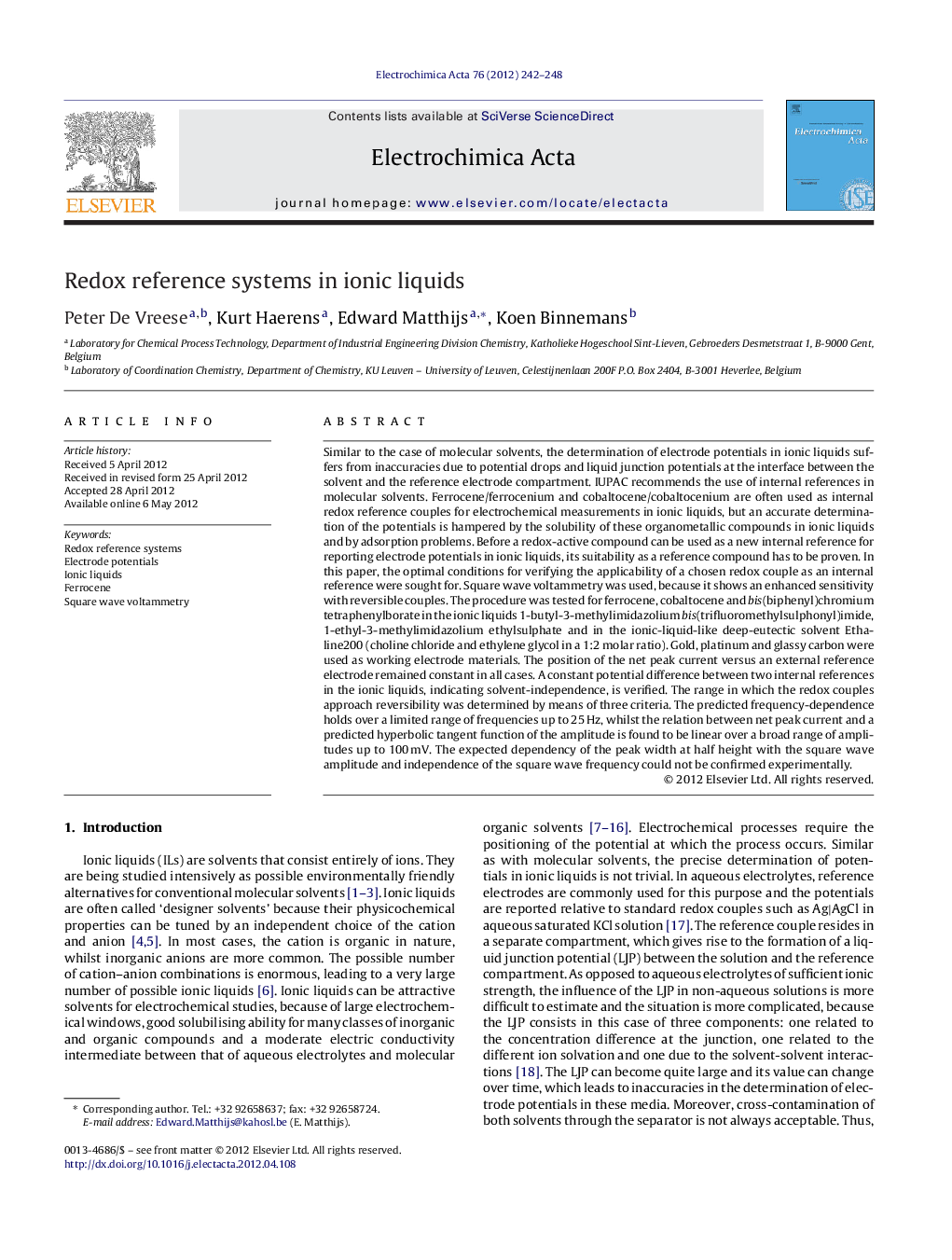| Article ID | Journal | Published Year | Pages | File Type |
|---|---|---|---|---|
| 188209 | Electrochimica Acta | 2012 | 7 Pages |
Similar to the case of molecular solvents, the determination of electrode potentials in ionic liquids suffers from inaccuracies due to potential drops and liquid junction potentials at the interface between the solvent and the reference electrode compartment. IUPAC recommends the use of internal references in molecular solvents. Ferrocene/ferrocenium and cobaltocene/cobaltocenium are often used as internal redox reference couples for electrochemical measurements in ionic liquids, but an accurate determination of the potentials is hampered by the solubility of these organometallic compounds in ionic liquids and by adsorption problems. Before a redox-active compound can be used as a new internal reference for reporting electrode potentials in ionic liquids, its suitability as a reference compound has to be proven. In this paper, the optimal conditions for verifying the applicability of a chosen redox couple as an internal reference were sought for. Square wave voltammetry was used, because it shows an enhanced sensitivity with reversible couples. The procedure was tested for ferrocene, cobaltocene and bis(biphenyl)chromium tetraphenylborate in the ionic liquids 1-butyl-3-methylimidazolium bis(trifluoromethylsulphonyl)imide, 1-ethyl-3-methylimidazolium ethylsulphate and in the ionic-liquid-like deep-eutectic solvent Ethaline200 (choline chloride and ethylene glycol in a 1:2 molar ratio). Gold, platinum and glassy carbon were used as working electrode materials. The position of the net peak current versus an external reference electrode remained constant in all cases. A constant potential difference between two internal references in the ionic liquids, indicating solvent-independence, is verified. The range in which the redox couples approach reversibility was determined by means of three criteria. The predicted frequency-dependence holds over a limited range of frequencies up to 25 Hz, whilst the relation between net peak current and a predicted hyperbolic tangent function of the amplitude is found to be linear over a broad range of amplitudes up to 100 mV. The expected dependency of the peak width at half height with the square wave amplitude and independence of the square wave frequency could not be confirmed experimentally.
